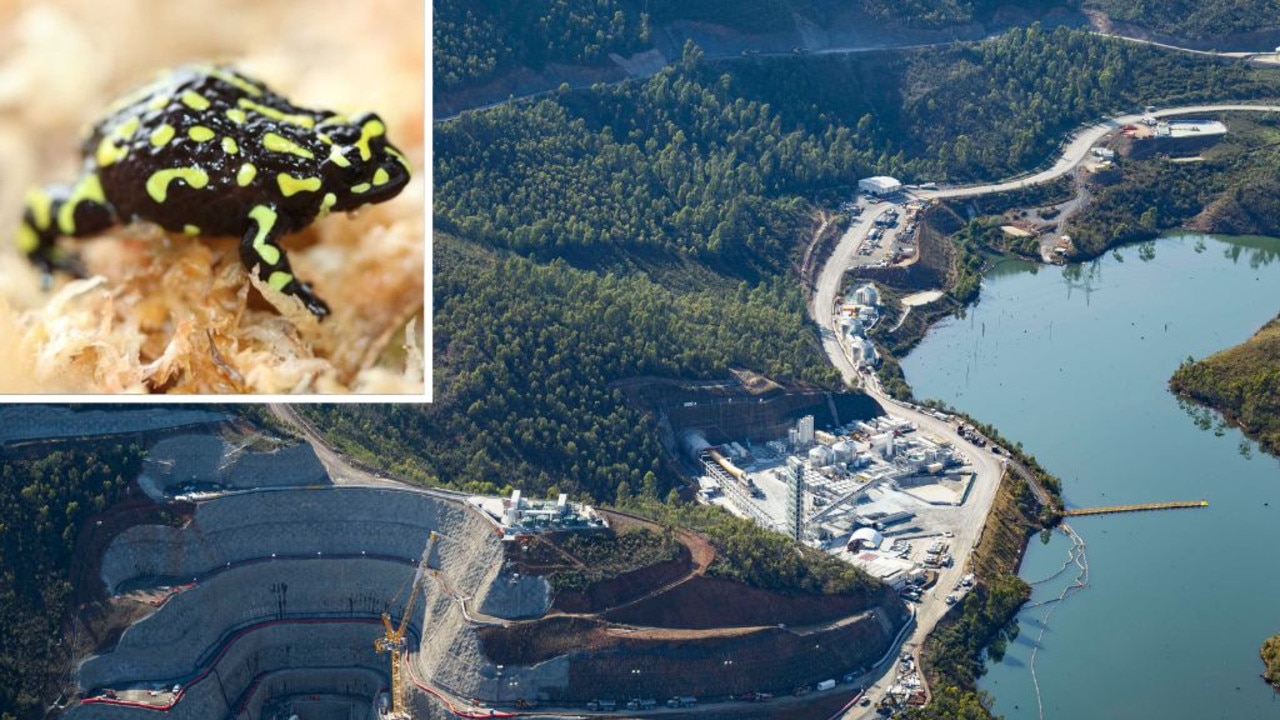Bushfires: ‘Ecological disaster’ as mass fish kill stretches 70km
Distressed residents have reported that ‘tens of thousands’ of rotting fish were washing up on the banks of NSW’s Macleay River.

Fishery experts are racing to confirm the scale of an unfolding “ecological disaster” on the mid-north coast of NSW after distressed residents reported that “tens of thousands” of rotting fish were washing up on the banks of the Macleay River.
The NSW Department of Primary Industries said fisheries officers had been dispatched to investigate reports of mass “fish deaths” in the upper and middle reaches of the river, northwest of Kempsey.
Arthur Bain, a volunteer with the Bellbrook Rural Fire Service and resident of the town for 30 years, said “tens of thousands” of dead fish were “floating down the river … All along the river, fish are gasping and dying. No one has ever seen this before, it has left layers of black mud and stinking, rotting fish.”
Mr Bain, who captured distressing images and videos of dead fish floundering on the riverbank, said the “scale was unprecedented — it stretches for at least 70km”.
“We’ve seen fish kills on the river after bushfires before, but never anything like this. It will take decades to recover from,” he said.
Mass fish die-offs were already expected to hit drought-afflicted waterways this summer, but scientists said the scale of the Macleay River fish kill was “shocking” and “worrying”.
Ricky Spencer, a conservationist and ecologist at Western Sydney University, said a “70km-long” stretch of dead fish was “certainly significant.”
Heavy rain pelted parts of the bone-dry region last week, washing ash and charred debris from recent bushfires that razed parts of the northern tablelands and mid-north coast into the river.
“Run-off from heavy rainfall events can wash large amounts of ash and sediment into rivers after bushfires,” Mr Spencer said.
“That causes rapid drops in oxygen levels in the water.”
Lee Baumgartner, a freshwater fish ecologist at Charles Sturt University, said a sudden deluge after a bushfire created the perfect storm for mass fish kills.
“When charcoal and ash goes into the river it can lead to a bacterial spike,” Professor Baumgartner said. “Bacteria needs oxygen to multiply, so as the bacteria grows, it sucks oxygen out of the water, which can cause fish to suffocate.”
This marks the second time in two months that the same stretch of river has been rocked by a mass fish death.
In late November, thousands of fish, including Australian bass, freshwater mullet and eel-tailed catfish, were killed, according to the NSW Department of Primary Industries.
A spokesperson said the department had “continued to receive reports of fish deaths in the upper and middle reaches of the Macleay River” and staff had been on “high alert” since the start of the state’s record-breaking bushfire season.
Mr Spencer said the mass die-off impacting the Macleay River heralded the start of the “fish-kill season” and — given last summer’s “catastrophe” on the Darling River, when more than one million fish perished — more mass fish deaths were likely in coming weeks.
On the banks of the Macleay River, Mr Bain said locals were desperately trying to pump oxygen into the river amid fears that the rotten fish could jeopardise critical commercial fishing operations further downstream.



To join the conversation, please log in. Don't have an account? Register
Join the conversation, you are commenting as Logout